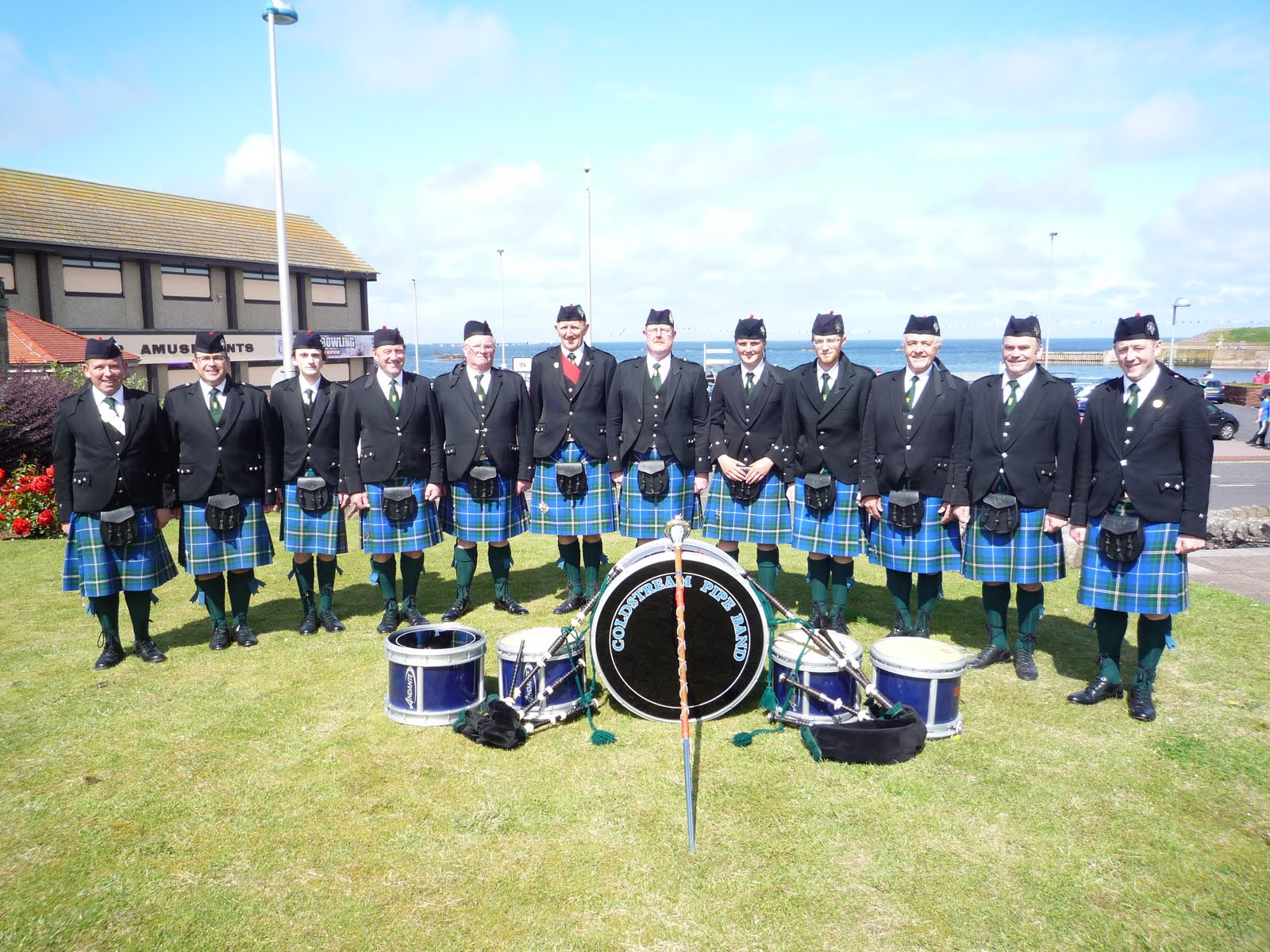




Just beyond the Crosshill Cross, see previous entry, lies Hume Castle, or at least a 17th Century folly on the site of the original castle. It was destroyed in 1651 by the army of that well known counter-revolutionary and pain in the bum Oliver Cromwell.
On the day we visited the door was locked and although a key can be obtained from a nearby house, its door was also locked and no-one was answering. This is probably why Cromwell's army blew the place up, if only they'd found someone in and got the key a lot of unecessary damage could have been avoided.
I borrowed this description of the Castle from the excellent site at http://www.armatura.connectfree.co.uk:
Situated more-or-less centrally in the Merse, Hume Castle stands on a prominent mound visible for miles. Constructed in the 13th century, it was the seat of the Humes (a.k.a. the Homes) and conveniently placed to keep an eye on the English border stronghold of Roxburgh, just outside modern Kelso.
James II, en route to an important appointment to be blown apart by one of his own cannons in the siege of Roxburgh castle, stayed at Hume. In 1547, Lady Hume (the Humes were the Scottish Wardens of the Eastern March) surrendered the castle to the besieging English only after they started to hang her son in front of her. Finally, after being taken in 1547, 1549, and 1569, the castle - like so many - was destroyed in 1651 by the artillery of Oliver Cromwell's leading poetry critic, Colonel Fenwick, after he read these immortal lines penned by the defiant Governor of the castle:
I Willie o' the Wastle
Stand firm in my castle;
An' a' the dogs in your toun
Sanna gar me gang doun.
Talk about poetic justice.
An iron cannon ball (laminating quietly) was found in one of the neighbouring gardens a few years ago. In 1794, the Earl of Marchmont constructed the present folly upon the ruins of the old castle. There was a beacon here when, in 1804, a charcoal-burner's fire was (wrongly) interpreted as a French invasion, sending the whole border region into confusion.
Fittingly, for a place that served as a strong point in the medieval period and a beacon station in the Napoleonic Wars, Hume was also the site of a Second World War lookout post (which can still be seen).


No comments:
Post a Comment